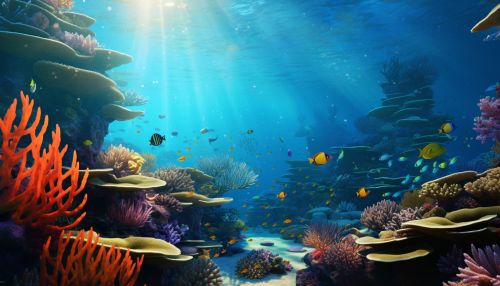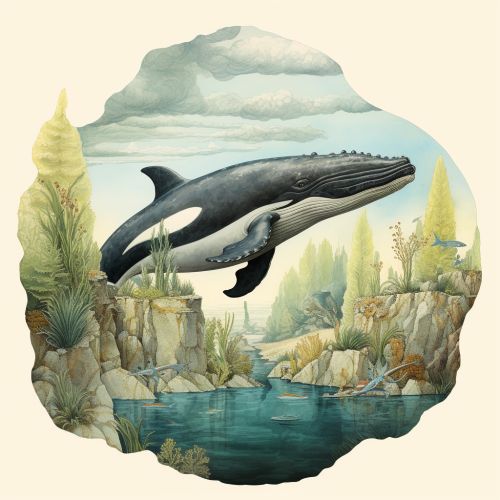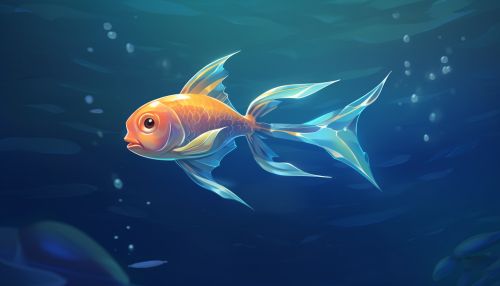The Biological Mechanisms of Animal Adaptation to Aquatic Environments
Introduction
Aquatic environments present a unique set of challenges to animal life, necessitating a range of biological adaptations. These adaptations, which span physiological, anatomical, and behavioral traits, enable animals to survive and thrive in water. This article delves into the various biological mechanisms that facilitate animal adaptation to aquatic environments.


Physiological Adaptations
Physiological adaptations are internal body processes that enable an animal to function effectively in its environment. In aquatic environments, these adaptations often involve respiration, osmoregulation, and thermoregulation.
Respiration
Respiration in aquatic environments is primarily facilitated by gills, specialized organs that extract dissolved oxygen from water. Gills function on the principle of countercurrent exchange, where blood and water flow in opposite directions to maximize oxygen uptake. Some aquatic animals, like dolphins and whales, possess lungs and rely on periodic surfacing to breathe air.


Osmoregulation
Osmoregulation, the regulation of water and salt concentrations, is crucial for aquatic animals. Freshwater animals face the challenge of excessive water intake and salt loss due to osmosis. They adapt by excreting large volumes of dilute urine and actively absorbing salts. Marine animals, on the other hand, lose water and gain salt. They adapt by drinking seawater, excreting excess salts, and producing small volumes of concentrated urine.
Thermoregulation
Thermoregulation in aquatic environments is challenging due to water's high heat capacity. Aquatic animals use various strategies for thermoregulation. Ectothermic animals, like fish, conform to the surrounding temperature, while endothermic animals, like whales, maintain a constant body temperature through insulation (blubber) and countercurrent heat exchange systems.


Anatomical Adaptations
Anatomical adaptations refer to physical features that enhance an animal's survival in its environment. In aquatic environments, these adaptations often involve body shape, appendages, and sensory organs.
Body Shape
The body shape of aquatic animals is often streamlined to reduce drag, facilitating efficient movement through water. For example, fish have a fusiform shape, while marine mammals like dolphins and whales have a similar streamlined shape.


Appendages
Aquatic animals have appendages adapted for swimming. Fish have fins, while marine mammals have flippers. Some aquatic animals, like seals, have limbs that have evolved into flippers, a process known as limb evolution.
Sensory Organs
Aquatic animals have sensory organs adapted to underwater perception. Many fish have a lateral line system that detects water movements. Marine mammals have well-developed auditory systems for underwater hearing. Some aquatic animals, like sharks, can detect electric fields, a sense known as electroreception.
Behavioral Adaptations
Behavioral adaptations are actions or patterns of behavior that enhance an animal's survival. In aquatic environments, these adaptations often involve feeding, mating, and predator avoidance behaviors.
Feeding Behavior
Aquatic animals have diverse feeding behaviors. Some, like filter-feeding whales, consume large volumes of water and filter out tiny organisms. Others, like predatory fish, actively hunt their prey.
Mating Behavior
Mating behaviors in aquatic animals are diverse and often complex. Some fish engage in elaborate courtship displays, while others lay eggs in carefully constructed nests. Some marine mammals, like dolphins, have complex social structures that influence mating behaviors.
Predator Avoidance
Aquatic animals employ various strategies to avoid predators. Some use camouflage or mimicry, while others form schools or shoals. Some marine animals, like squid, use ink as a defensive mechanism.


Conclusion
The biological mechanisms of animal adaptation to aquatic environments are diverse and complex, involving a range of physiological, anatomical, and behavioral traits. These adaptations enable animals to overcome the unique challenges posed by aquatic environments and thrive in these habitats.
